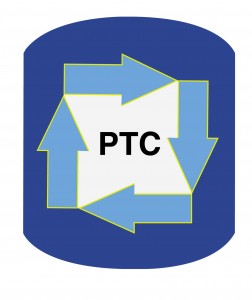Most of us recognize that when you run PTC reactions using solid salts as the source of a nucleophilic anion (e.g., solid NaCN for nucleophilic cyanide) or a basic anion (e.g., solid NaOH for hydroxide base), you almost always get much higher reactivity than if you use the same salts dissolved in water (e.g., 25% aq NaCN or 50% aq NaOH).
From time to time, though not often, someone will say that using a solid salt in their company’s process as the source of their reacting anion is not feasible since during work up they cannot tolerate a filtration to remove the solid salt byproduct. In other words, if they are performing a cyanide/chloride exchange for example, RCl + NaCN => RCN + NaCl, they do not want to remove the NaCl byproduct by filtration, so they argue that they need to use 25% NaCN so the reaction will be liquid-liquid and then at the end of the reaction they simply separate the liquid phases and avoid filtration.
Even though these people usually have a degree in chemistry or engineering (indicating a reasonably high IQ), sometimes I have to point out that we can do the reaction using a solid salt as the anion source and when the reaction is over, we then add enough water to dissolve all the byproduct salts for a relatively easy liquid-liquid phase separation.
If the person is not familiar enough with PTC, they will sometimes say that it is more convenient to have the water in the reactor from the beginning. That’s when they need to be reminded that over-hydration of an anion reduces the reactivity of the anion, often by orders of magnitude in PTC systems.
If we run the reaction under solid-liquid PTC conditions, then add water during workup to dissolve the salts, the result is then that we are able to achieve desired productivity with an activated anion under solid-liquid PTC conditions, then still have a feasible liquid-liquid separation during work by adding enough water after the reaction is over.
Sometimes they will say that the productivity is not really that high because we have to leave enough empty space in the reactor for all the water that we will add at the end of the reaction, so we will not be utilizing all the volume of the reactor efficiently. I then tell them that the net result will be higher productivity if, for example, the use of solid-liquid PTC conditions during the chemical reaction increases reactivity 10-fold but we have to leave an extra 30% of the reactor volume empty to allow for the addition of water during work up.
In other words, it seems obvious to leave enough room in the reactor during the chemical reaction stage to add water during work up, but I have had to use this argument on several occasions.
When dealing with people who have never done PTC before, I sometimes encounter the argument against solid-liquid PTC when people say “if I use solid NaCN to react with RCl that is dissolved in toluene, the solid inorganic salt in the strong ionic crystal lattice will not interact with the non-polar organic phase and there will be no reaction.” That is a good time to explain that the phase-transfer catalyst will do the work of transferring the anion from the surface of the solid salt into the bulk organic phase and that the chemical reaction is not interfacial. We also explain that sometimes we need to add just a tiny bit of water (or MeOH or even DMSO) to create a thin film of saturated NaX at the solid surface to loosen up a few anions for transfer by the phase-transfer catalyst.
The only objection to solid-liquid PTC that is sometimes hard to overcome is when we encounter systems that create slurries that are simply too hard to mix. Sometimes slurries are easy to mix, sometimes they are hard to mix. Sometimes, agitation engineering expertise is required to solve the problem, but the only way to find out is to try sold-liquid PTC (after performing a thorough hazard operations analysis to make sure it is safe to do so) and see if agitation is OK.
If your company can benefit from achieving higher process performance in a shorter development time by having access to the best PTC expertise available, now contact Marc Halpern by E-mail to inquire about using phase-transfer catalysis to achieve low-cost high-performance green chemistry.
If you’re not sure if PTC can help your reaction, now fill out the form shown at http://phasetransfer.com/projectform.pdf and send it to Marc Halpern by fax at +1 856-222-1124 or by E-mail of a scanned copy. If we do not have a secrecy agreement already in place, please use “R-groups” instead of the exact chemical structures.

